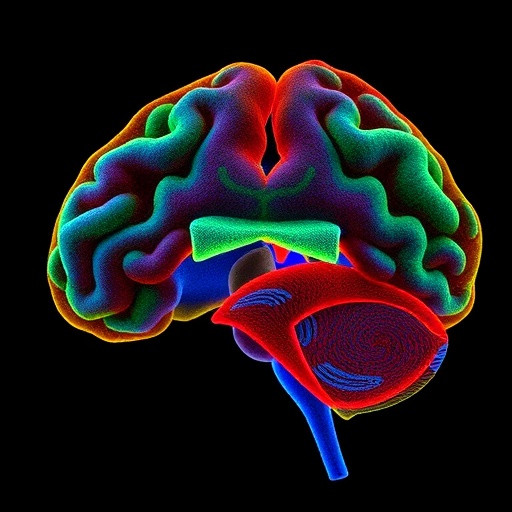Bioelectronics stands at the forefront of a technological revolution that promises to redefine healthcare as we know it. With the integration of biological processes and electronic technologies, bioelectronic devices offer unprecedented capabilities for real-time monitoring, diagnosis, and treatment of various health conditions. Imagine a world where individuals, regardless of their geographic location or socioeconomic status, can access healthcare remotely without the need to frequently visit hospitals. By utilizing wireless connections, these innovative systems are designed to provide life-changing care to those in low-resource settings, thereby addressing some of the most pressing disparities in global health.
However, the journey toward widespread implementation of bioelectronic devices is not without its challenges. A significant hurdle lies in the biomechanical incompatibility between conventional silicon-based systems and human tissue. The rigidity and structural characteristics of silicon materials can lead to limited conformability within biological environments, increasing the potential for mechanical failure. This mismatch between device and tissue can pose serious threats to the efficacy and safety of such devices. As healthcare technology advances, addressing these biomechanical issues is paramount to the successful integration of bioelectronics into everyday health management.
Another challenge that bioelectronics faces involves the materials used to create devices. Conductive polymers have emerged as one of the flexible solutions in this realm, featuring properties that can better conform to human tissue. Despite their advantages, conductive polymers are not without limitations. They often suffer from inadequate surface chemistry, which hampers their compatibility with various biological signals. Their lower electrical conductivity compared to metals can also restrict performance, and stability issues in physiological environments raise concerns regarding their long-term efficacy and safety in clinical applications. These material limitations underscore the urgent need for alternative approaches to developing bioelectronic devices that can withstand various biological conditions without compromising functionality.
To overcome these obstacles, researchers are increasingly turning their attention to low-dimensional materials. These materials, including nanomaterials and two-dimensional materials such as graphene and transition metal dichalcogenides, present a compelling solution that bridges existing gaps in performance and compatibility. Notably, low-dimensional materials boast an array of properties, such as flexibility, biocompatibility, and superior electrical conductivity, that make them ideal candidates for use in bioelectronic systems. As research in this area progresses, the potential applications for low-dimensional materials appear virtually limitless, promising advances in how we approach medical diagnostics and treatments.
The development of bioelectronic devices utilizing low-dimensional materials holds the promise of creating systems that can perform stable and time-solved measurements of both biophysical and biochemical signals. In the quest for miniaturization, these devices can achieve an unobtrusive form factor while remaining incredibly powerful in their diagnostic capabilities. The ability to monitor health metrics and conditions in real time represents a major leap forward in preventative medicine, allowing for early intervention and significantly improved patient outcomes.
Consider the potential of wearable devices that seamlessly integrate low-dimensional materials. They could monitor critical health indicators, such as heart rate, glucose levels, or hydration status, without the need for invasive procedures. Imagine a device that not only tracks your vital signs but also analyzes your biochemical signals in a non-invasive manner, sending data directly to your healthcare provider. This capability would allow for remote patient management and timely adjustments to treatment plans based on real-time data, thereby transforming the dynamics of healthcare delivery.
Moreover, the integration of advanced wireless technologies and low-dimensional materials can ensure that these devices are interconnected. This means that bioelectronics could create a network of data-sharing, enabling collaborative health monitoring not only between patients and clinicians but also among other healthcare technologies. This interconnectedness can lead to more comprehensive health insights and promote personalized medicine approaches tailored to individual needs. With the rapid advancements in artificial intelligence and data analytics, the incorporation of these technologies into bioelectronics will further enhance diagnostic accuracy and treatment efficacy.
Despite these advancements, it is essential to maintain a cautious outlook regarding the implementation of bioelectronic devices. The ethical implications surrounding wearable health technology must be carefully examined, particularly concerning data privacy and security. As healthcare becomes increasingly digitized, the protection of sensitive health information will be paramount. Ensuring that patient data remains secure and confidential is essential for maintaining trust in these groundbreaking technologies. Additionally, it is crucial to consider issues relating to accessibility and equity; steps must be taken to ensure that all populations can benefit from the advances in bioelectronics.
The future landscape of healthcare is poised to change dramatically with the continued integration of bioelectronics into our daily lives. As research progresses and obstacles are overcome, we may find that these devices become integral parts of our health management routines. With researchers dedicated to refining the properties and applications of low-dimensional materials, the pathway to innovative and effective bioelectronic systems becomes clearer. The convergence of biological insight, engineering prowess, and technological innovation will undoubtedly bring forth a new era in personalized healthcare delivery.
As we look to the future, it is clear that the ongoing research in bioelectronics is more than just a scientific endeavor; it is a quest to enhance human health in meaningful ways. The potential applications within this field are expansive, and the world is witnessing a paradigm shift in how healthcare is approached. The amalgamation of biology and technology offers not only exciting prospects for advancements in medical treatments but also a hope for equitable access to health services for all individuals, regardless of their situation. Through collaboration between researchers, clinicians, and technologists, the barriers that have historically separated healthcare from cutting-edge technology might be dismantled, paving the way for a brighter and healthier future.
In conclusion, the development of low-dimensional materials for bioelectronic devices is a significant milestone in the pursuit of innovative healthcare solutions. From improving conformability to increasing the stability and performance of devices, these materials have the potential to create a transformative impact on how we monitor and treat health conditions. The future vision of bioelectronics is not only focused on technological advancement but also on fostering a healthcare system that is inclusive, accessible, and responsive to the needs of all individuals. The implications of this research extend far beyond the laboratory, with the promise of real-world applications poised to revolutionize the very fabric of healthcare as we understand it today.
Subject of Research: Low-dimensional materials for bioelectronic devices
Article Title: Low-dimensional materials for bioelectronic devices
Article References:
Gao, M., Yao, Y., Chen, J. et al. Low-dimensional materials for bioelectronic devices.
Nat Rev Bioeng (2025). https://doi.org/10.1038/s44222-025-00364-9
Image Credits: AI Generated
DOI: 10.1038/s44222-025-00364-9
Keywords: bioelectronics, low-dimensional materials, real-time monitoring, health technology, wearable devices, medical diagnostics, patient care, biomedical engineering, healthcare delivery, material science.
Tags: addressing global health disparitiesadvancements in healthcare technologybioelectronic device integrationbiomechanical compatibility in bioelectronicschallenges in bioelectronic implementationconductive polymers in medical devicesinnovation in electronic and biological systemsLow-dimensional materials for bioelectronicsnext-generation bioelectronic applicationsreal-time health monitoring systemsremote healthcare access solutionswearable health technology developments





